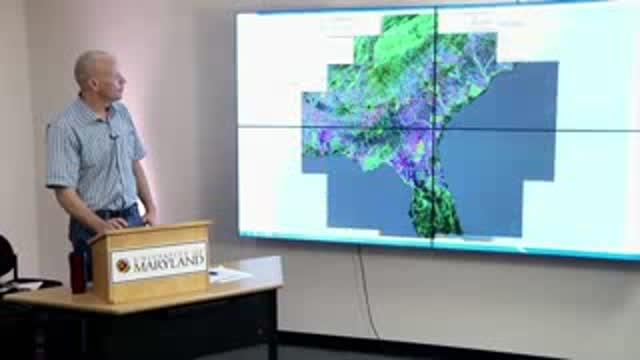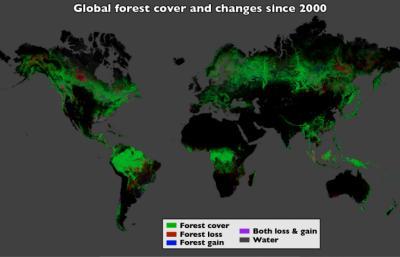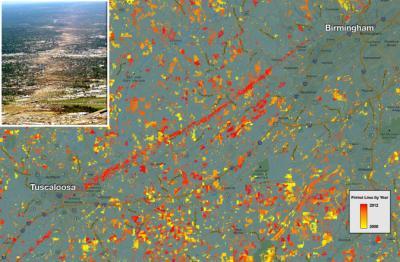During the study period, Brazil cut its deforestation rate from approximately 15,400 square miles (40,000 square kilometers) per year to approximately 7,700 square miles (20,000 square kilometers) per year.
"That's the result of a concerted policy effort to reduce deforestation, and it sets a standard for the rest of the world," Hansen said.
The team found that the deforestation rate in other countries increased. Indonesia's deforestation rate doubled in the study period, from approximately 3,900 square miles (10,000 square kilometers) per year in 2000-2003 to more than 7,700 square miles (20,000 square kilometers) in 2011-2012.
Prior to this study, country-to-country comparisons of forestry data were not possible at this level of accuracy. Different countries define forests differently, making previous global comparisons difficult with existing inventories.
"When you put together datasets that employ different methods and definitions, it's hard to synthesize," Hansen said. "But with Landsat, as a polar-orbiting instrument that takes the same quality pictures everywhere, we can apply the same algorithm to forests in the Amazon, in the Congo, in Indonesia, and so on. It's a huge improvement in our global monitoring capabilities."
"Since the first Landsat satellite launched 41 years ago, scientists have been improving their land cover analysis as computers have become more powerful," said Jeff Masek, Landsat project scientist at NASA's Goddard Space Flight Center in Greenbelt, Md. "Projects like Hansen's took a big leap forward once USGS made the data freely available on the Internet in 2008."
"This is the first time somebody has been able to do a wall-to-wall, global Landsat analysis of all the world's forests -- where they're being cleared, where they're regrowing, and where they're subject to natural disturbances," Masek said, noting that the maps could be routinely updated to aid in carbon accounting and other studies of land cover change.
The maps also illustrate the impact of politics on land cover. On the island of Borneo, the maps clearly show the border between Malaysia and Indonesia. Malaysia's heavy logging along forest roads is visible right up to the Indonesian border, where forests were still largely intact as of 2012. In Côte d'Ivoire, a civil war in 2002 corresponded with intense deforestation of several previously protected nature reserves.

Twelve years of global deforestation, wildfires, windstorms, insect infestations and more are captured in a new set of forest disturbance maps created from billions of pixels acquired by the Landsat 7 satellite.
(Photo Credit: Image : NASA Goddard, based on data from Hansen et al., 2013.)
A different pattern of change appears in the southeastern U.S., where landowners harvest trees for timber and quickly plant their replacements.
"Of this eco-region in the southeast, 30 percent of the forest land was regrown or lost during this period," Hansen said. "It's incredibly intensive. Trees are really treated like a crop in this region."
In Alabama, Landsat also detected miles-long streaks of destroyed forest. When the researchers examined the year-by-year record, they found the damage occurred in 2011 after a violent tornado season.
Since 1972, the Landsat program has played a critical role in monitoring, understanding and managing the resources needed to sustain human life such as food, water and forests. Landsat 8 was launched Feb. 11 and is managed jointly by NASA and USGS to continue the 40-plus years of Earth observations.

Using Landsat imagery and cloud computing, researchers mapped forest cover worldwide as well as forest loss and gain. Over 12 years, 888,000 square miles (2.3 million square kilometers) of forest were lost, and 309,000 square miles (800,000 square kilometers) regrew.
(Photo Credit: Image : NASA Goddard, based on data from Hansen et al., 2013.)

The forest cover maps also capture natural disturbances such as this 2011 tornado path in Alabama. In this map, the colors represent forest loss by year, with yellows representing loss closer to 2000 and reds representing later forest loss, up to 2012.
(Photo Credit: Image : NASA Goddard, based on data from Hansen et al., 2013.)
Source: NASA/Goddard Space Flight Center